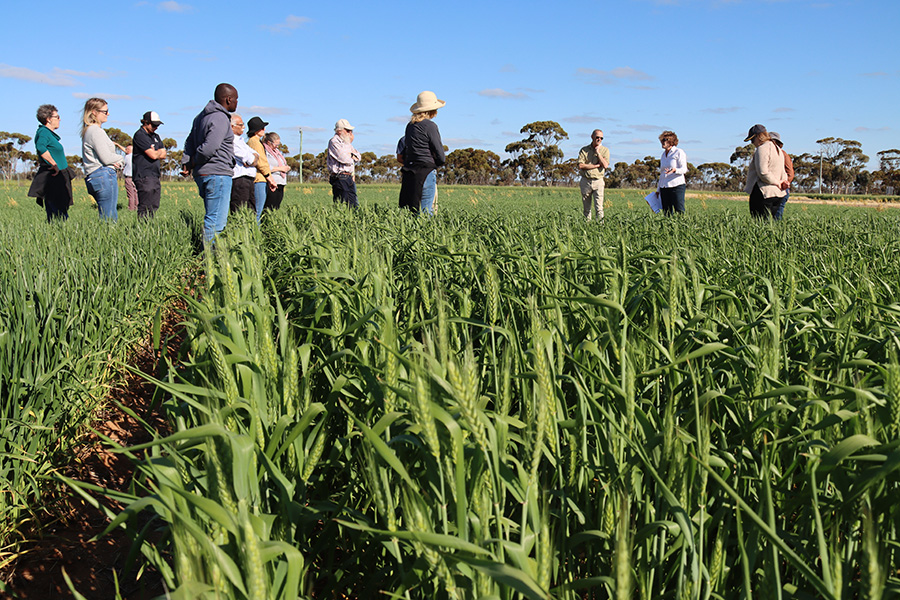
Speaking at the Grains Research and Development Corporation (GRDC) 2022 Grains Research Update today (8 March), research scientist Brenda Shackley said current winter wheats were typically still flowering too late, even when sown in early April.
It follows DPIRD trials last season which assessed commercial and potential winter and spring wheat varieties for their suitability to early sowing opportunities in WA – examining yield, phenology and dry matter production.
Ms Shackley said flowering date was critical for wheat yield, with flowering required within an optimal period to allow the variety to reach its full yield potential while minimising the effects of frost, heat and drought on yield.
“Even with an early to mid-April sowing, winter types such as DS Bennett and Illabo flowered too late, leading to lower grain yields,” Ms Shackley said.
“Illabo, an AH winter wheat, achieved yields similar to most of the mid-slow spring wheat varieties when sown in mid-April at Dale in 2021 and Katanning in 2020.
“At these sites, the highest yields were achieved from sowing mid-slow spring wheats in late April.
“Winter wheats were not competitive at Mullewa, Merredin or Grass Patch.”
Ms Shackley said in a late March sowing opportunity at Gibson, root disease limited the performance of some of the winter wheats, highlighting the importance of local adaptation for success in WA conditions.
“The research continues to highlight the need for a winter wheat or longer spring variety which is suited for early April or earlier sowing opportunities in WA,” Ms Shackley said.
“While winter types have an extended growing period when sown in early April, maximum yields are almost always achieved by mid-slow spring varieties sown in late April to early May.
“Winter wheats generally flower too late to maximise yield potential even when sown early.”
Ms Shackley said there was potential for winter wheat varieties in the longer season environments of WA where they could better convert their biomass production into yield.
Agronomic recommendations to maximise the performance of winter wheat in WA include:
- Sow early, sow slow - match variety and sowing time to reduce risk of frost or heat/drought stress.
- Don’t sow too early – grain yield data from March sowing is limited for WA, however establishment can be difficult with high temperatures and a drying seed bed.
- Select your paddocks carefully - early sown crops perform best in paddocks with a very low weed burden.
- Don’t sow too deep or sow dry – winter wheats often have short coleoptiles and dry sowing is a risky option if the break occurs later than expected.
- Don’t reduce seeding rates - very low plant densities compete poorly with weeds.
- You can delay nitrogen – the early nitrogen requirement is low which can help reduce excessive early growth and haying-off, but deferred application reduces the amount of dry matter for grazing.
- Manage pests and diseases.
- Grain & Graze – follow recommendations to cease grazing before stem elongation to reduce yield loss.
The virtual Grains Research Update continues on 8 and 10 March. For more information visit the GRDC Updates and events page.
Photo caption: DPIRD research scientist Brenda Shackley discusses trials assessing commercial and potential winter and spring wheat varieties for their suitability to early sowing opportunities in WA.


